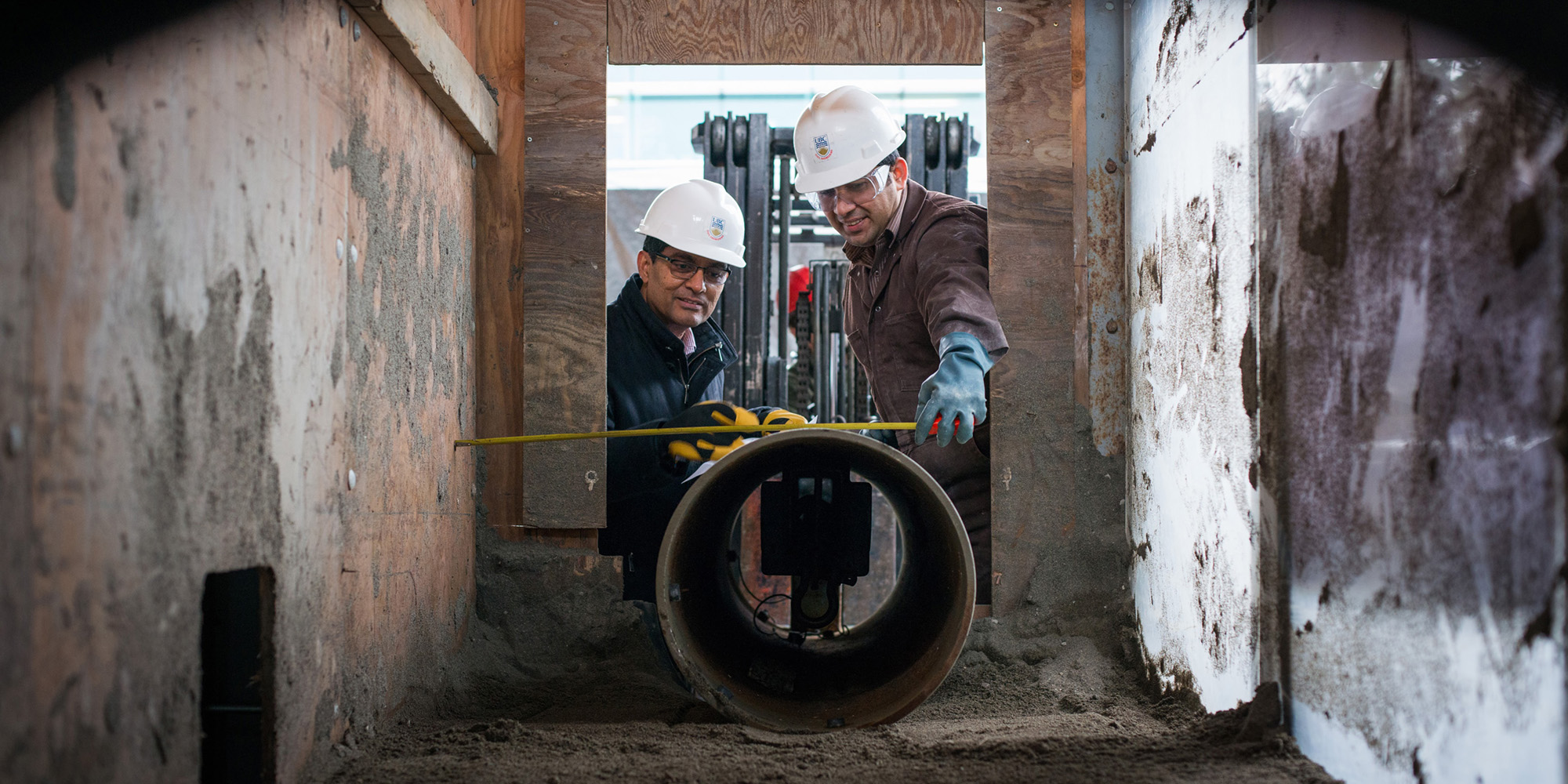How Consulting Engineers Enhance Geotechnical Design Projects: Insights Into Their Competence, Approaches, and Collaborative Approaches
Consulting engineers are pivotal in improving geotechnical engineering tasks, using their specialized understanding to navigate the intricacies of subsurface conditions. Their techniques incorporate a variety of site examination strategies, including Criterion Infiltration Examinations (SPT) and Cone Penetration Examinations (CPT), which notify vital decisions throughout the style and construction stages. Moreover, their collaborative strategies foster interaction among varied project stakeholders, inevitably shaping the task's trajectory. As we take a look at the complex duties these experts play, it comes to be clear that their contributions expand beyond technological experience, triggering a more detailed take a look at the effects for project success.
Duty of Consulting Engineers
The experience of speaking with designers in geotechnical design is basic to the successful execution of construction jobs. These specialists play a crucial role in evaluating dirt and rock residential properties, which are crucial aspects influencing layout and building and construction choices. By conducting extensive website examinations, speaking with designers accumulate essential data that informs the design process, making sure tasks are improved stable and suitable ground.
Consulting engineers likewise supply important understandings right into danger monitoring (geotechnical geologist). They recognize potential geotechnical hazards, such as landslides, dirt liquefaction, and negotiation issues, enabling stakeholders to carry out efficient mitigation techniques. Their experience aids in optimizing foundation designs, which can lead to significant cost savings and boosted safety and security
Furthermore, consulting engineers function as a vital web link in between job proprietors, engineers, and specialists. Their capability to translate complex geotechnical information into actionable recommendations fosters partnership and helps with educated decision-making throughout the job lifecycle. This multidisciplinary technique not just boosts project performance yet also makes sure compliance with regulative criteria and finest techniques.
Trick Techniques in Geotechnical Design

One primary method is website investigation, which entails conducting field tests and lab evaluations to collect data on subsurface conditions. Strategies such as Requirement Penetration Screening (SPT) and Cone Penetration Screening (CPT) are extensively made use of to review dirt stratigraphy and strength. In addition, geophysical approaches, including seismic and electric resistivity surveys, offer non-invasive methods to examine subsurface qualities.
One more important method is mathematical modeling, which enables engineers to mimic various situations and forecast how soil-structure interactions will act under various loading problems. Finite Element Evaluation (FEA) is a typical approach used in this context.
In addition, the design of structures, maintaining frameworks, and earthworks counts heavily on these methods - geotechnical geologist. By integrating advanced analytical tools with field information, seeking advice from engineers can create customized solutions that deal with certain task challenges, inevitably adding to the security and security of building tasks
Significance of Dirt Analysis
Soil evaluation offers as a fundamental aspect in geotechnical engineering, giving essential understandings into the physical and chemical properties of soil essential for reliable building and construction planning. Understanding soil qualities is vital for determining its load-bearing ability, drain actions, and possibility for negotiation or instability. In-depth soil examinations, consisting of sampling and research laboratory testing, help recognize parameters such as dirt kind, wetness material, density, and shear strength.
These analyses educate the option of suitable building techniques and products, visit site inevitably affecting job safety and security and long life. For instance, cohesive soils might require various foundation layouts contrasted to granular soils, requiring tailored design remedies. Furthermore, dirt analysis aids in determining contaminants that might present threats to human health and wellness or the atmosphere, permitting the development of reduction methods.
Incorporating soil analysis right into the beginning of project growth aids to minimize unforeseen challenges, making sure that engineers can expect and attend to prospective concerns prior to they rise. By establishing a comprehensive understanding of the website conditions, getting in touch with designers can maximize design effectiveness and lower prices, thus boosting the overall success of geotechnical design projects.
Collaborative Strategies in Tasks
Successful geotechnical projects frequently rest on collaborative methods that combine varied know-how from various disciplines. Effective collaboration best site amongst consulting engineers, rock hounds, environmental scientists, and building professionals is critical for addressing intricate difficulties and maximizing job results. By leveraging the one-of-a-kind skills and expertise of each team participant, jobs can gain from an all natural understanding of the site conditions, regulative needs, and design constraints.
Normal interaction and interdisciplinary meetings facilitate the sharing of understandings and cultivate a society of team effort. These joint efforts make it possible for the recognition of potential threats early in the project lifecycle, permitting for prompt mitigation techniques. Integrating comments from stakeholders, consisting of neighborhood communities and regulative firms, ensures that all viewpoints are thought about, enhancing project approval and conformity.
In addition, the integration of advanced technologies, such as Geographic Details Systems (GIS) and Building Info Modeling (BIM), further improves partnership. These devices enable for the real-time sharing of data and visualization of geotechnical conditions, advertising educated decision-making. Eventually, a joint strategy not only enhances project implementation however additionally lays the structure for cutting-edge solutions to intricate geotechnical engineering difficulties.
Effect On Job End Results

Consulting designers employ sophisticated techniques such as danger assessment and anticipating modeling, which Discover More Here enhance the accuracy of task forecasts. Their ability to incorporate ingenious modern technologies, like geotechnical instrumentation and data analytics, better fine-tunes the design and construction processes. Therefore, tasks experience boosted efficiency, minimized prices, and decreased delays.
Additionally, cultivating reliable communication and partnership amongst team participants improves analytical capacities. When challenges develop, an unified front permits quick identification of services, protecting against possible problems. Ultimately, the collective efforts of consulting designers add to better results, guaranteeing that projects fulfill both governing standards and client assumptions.
Verdict
